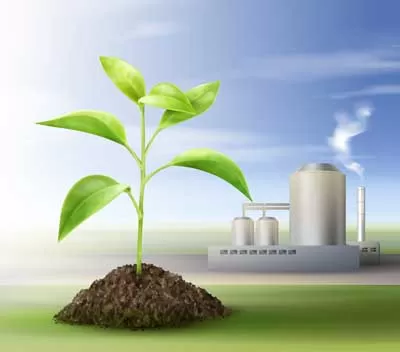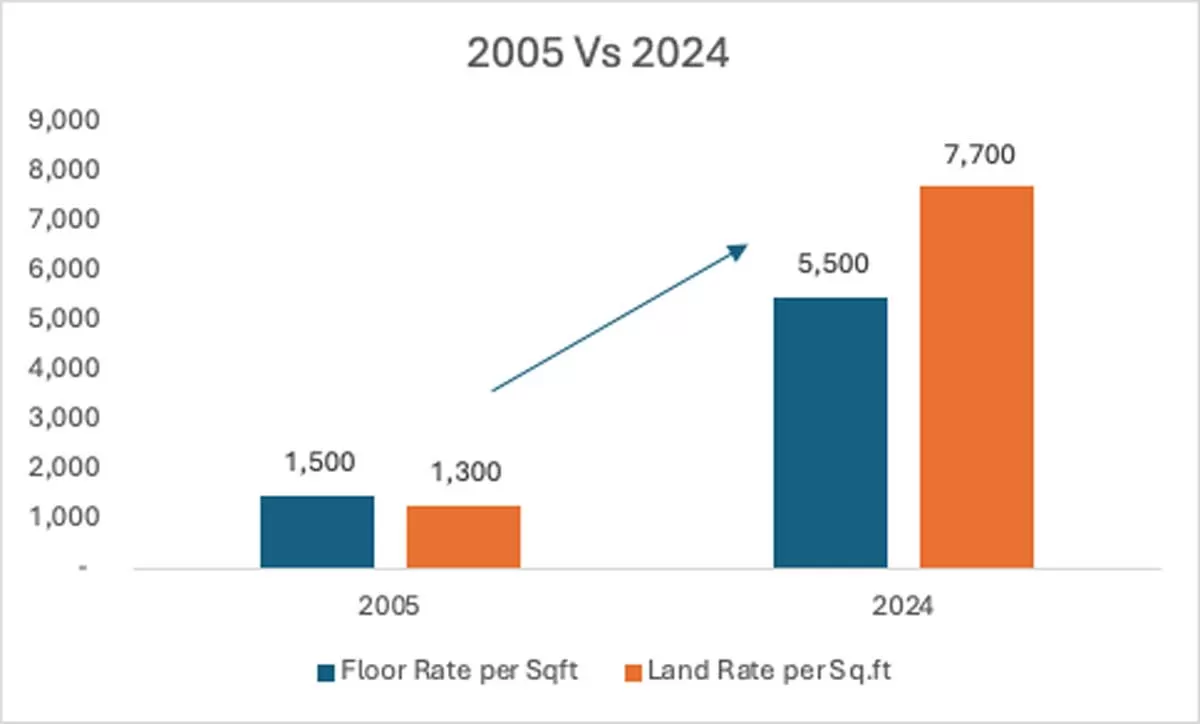The infrastructure sector is a key growth driver for the Indian economy and enjoys intense government focus.
India has an investment requirement of Rs 50 trillion ($ 777.73 billion) in infrastructure by 2022 for sustainable development and is attracting significant interest from international investors in the space.
In 2017, the Indian infrastructure sector witnessed 91 M&A deals worth $ 5.4 billion. And in 2018, the sector witnessed private equity (PE) and venture capital (VC) investments worth $ 1.97 billion. In June 2018, the Asian Infrastructure Investment Bank (AIIB) announced a $ 200 million investment into the National Investment and Infrastructure Fund (NIIF). FDI received in the construction development sector (townships, housing, built-up infrastructure and development projects) from April 2000 to March 2019 stood at $ 25.05 billion, according to the Department of Industrial Policy and Promotion (DIPP). In the Union Budget 2019-20, over 8.1 million houses with an investment of about Rs 4.83 trillion ($ 69.10 billion) have been sanctioned under Pradhan Mantri Awas Yojana (PMAY) Urban, of which construction of around 4.7 million houses has begun.
According to data from the January 2018 MoSPI Flash Report, of a total of 1,304 projects, 16 were ahead of schedule and 372 were on schedule while 354 projects were delayed. In addition, 345 projects have incurred cost overruns while 78 have shown cost savings; 94 projects have incurred both time and cost overruns.
Roadways
Highway construction in India has increased at a CAGR of 23 per cent from FY 14-18. In FY18, 9,829 km of highways were constructed with an expenditure of Rs 1.16 trillion ($ 18.05 billion). In the Budget, Rs 830.1597 billion ($ 11.51 billion) was allocated to the National Highways Authority of India (NHAI), while Rs 190 billion (US$ 2.63 billion) was allocated to the Pradhan Mantri Gram Sadak Yojana (PMGSY) to develop roads in rural and backward areas. A target of constructing 10,000 km of National Highways during 2018-19 was set up, of which 6,715 km have been constructed as of December 2018.
Railways
The Indian Railways received an allocation of Rs 66.77 billion ($ 9.25 billion) in the Budget. Of this, Rs 64.587 billion ($ 8.95 billion) is capital expenditure. The Railways will require an investment of Rs 35.3 trillion ($ 545.26 billion) by 2032 for capacity addition and modernisation. Capital expenditure in the sector is expected to be increased to 92 per cent annually. All trains will become electric by 2022. Indian Railways plans to become world’s first 100 per cent ‘Green Railways’. Under its Rs 1.07 trillion redevelopment plan, the Railways plans to revamp 400 railway stations by monetising 2,700 acre of spare railway land. As for metro rail, as of July 2019, 657 km of metro network has become operational across the country.
Ports
Expansion of port capacity has been accorded the highest priority with the implementation of projects like Sagarmala and Unnati. Under Unnati, global benchmarks have been adopted to improve the efficiency and productivity key performance indicators for 12 major ports. Around 116 initiatives have been identified across 12 major ports to unlock a capacity of over 100 mtpa just through efficiency improvement. Of this, 86 initiatives have been implemented to unlock capacity of around 80 mtpa.
Airports
The Airports Authority of India (AAI) aims to bring around 250 airports under operation across the country by 2020. It has developed and upgraded over 23 metro airports in the past five years. It plans to develop city-side infrastructure at 13 regional airports across India, with help from private players, to build hotels, car parks and other facilities, thereby boosting its non-aeronautical revenues. AAI plans to spend over Rs 210 billion ($ 3.2 billion) between 2018 and 2022 to build new terminals and expand capacity of existing ones. About 22 airports will be connected under a regional connectivity scheme. Over 30 airport development projects are under progress across various regions in Northeast India and AAI plans to develop over 20 airports in Tier-II and Tier-III cities in the next five years. As many as 56 new airports are expected to become functional in the country over the next few years. Under UDAN, 719 routes have been awarded in three rounds of bidding for regional connectivity, 182 of which are operational.
Construction equipment
The demand for construction equipment in India grew by 24 per cent in FY 2017-18 and the sector crossed 90,000 units for the first time, despite the hiccups of emission and GST in April and July 2017, respectively. Demonetisation also had a negligible effect on growth. By FY20, the industry’s revenue is estimated to reach $ 5 billion. Easy availability of finance, positive market sentiments and equipment replacement have been growth drivers for the industry.
In the calendar year 2018, the construction equipment industry registered a growth of about 30 per cent. However, the growth curve started shrinking in early 2019 owing to contraction in road projects in the run-up to the general elections. Further, in December 2018, credit rating firm ICRA evised its outlook for the sector to negative as sales of units dipped sharply owing to sluggish infrastructure investments and a tight liquidity environment.
The Government, which is a major demand driver, also plays a facilitator’s role through policy and regulations. It is the largest end-customer accounting for nearly two-thirds of the demand for equipment and hence has a significant impact on the industry.
German technology
Germany has always been at the vanguard of innovation and new German technologies to reduce CO2 emission are ready. CO2 contributes to the greenhouse effect and construction machinery contributes in part while building material plants can have a major impact as well. As per the Paris Agreement, by 2050, the output of greenhouse gases must be reduced drastically to contain global warming.
Almost all good manufacturers of construction machinery have been working tirelessly for the past few decades to bring their machines up to date and reduce emissions. On one hand, European legislation has dictated the gradual reduction of exhaust emissions since 1996 – although this only marginally affects CO2 – while on the other, cost pressures have resulted in them reducing fuel consumption and, in turn, CO2 emissions.
Increasing digitalisation is helping to optimise these processes and make them leaner, which also saves fuel. It is therefore not viable approach to upgrade old machines (i.e. retrofit); users should instead invest in modern, cutting-edge construction machinery that meets increased demands and is optimally designed for the entire operational process.
The boom in the German construction equipment sector is continuing as an increasing number of regions around the world are experiencing growth. In 2018, out of India’s total imports of construction equipment to the tune of €1.6 billion, Germany stood second with a share of 25.2 per cent after China (33.9 per cent) and ahead of Korea (18.1 per cent). This trend is expected to continue for 2020.
The way forward
To create a $ 10 trillion economy by 2032, India needs robust and resilient infrastructure. Today, next-generation infrastructure is bringing physical infrastructure and technology like IoT and automation together to maximise efficiency.
Public investment cannot fund the entire infrastructure investment requirements of the country. Further, private players are usually eager to bring their capital into developed Indian states compared to less developed ones. Therefore, the real challenge lies in bringing adequate private investment across the country with the collaboration of the public sector. Alongside, provision of social infrastructure is also equally important.
Many German companies have set up manufacturing facilities in India while many are in the process, in addition to sales and service offices. German manufacturers like Liebherr, Schwing Stetter, Putzmeister, Wirtgen, ZF, Beumer and Thyssenkrupp, to name a few, have invested substantially in the past five years and several companies and VDMA members are planning more investments. Further, many VDMA member companies have established centres for product development and R&D to serve the global requirements through the Indian workforce.

















